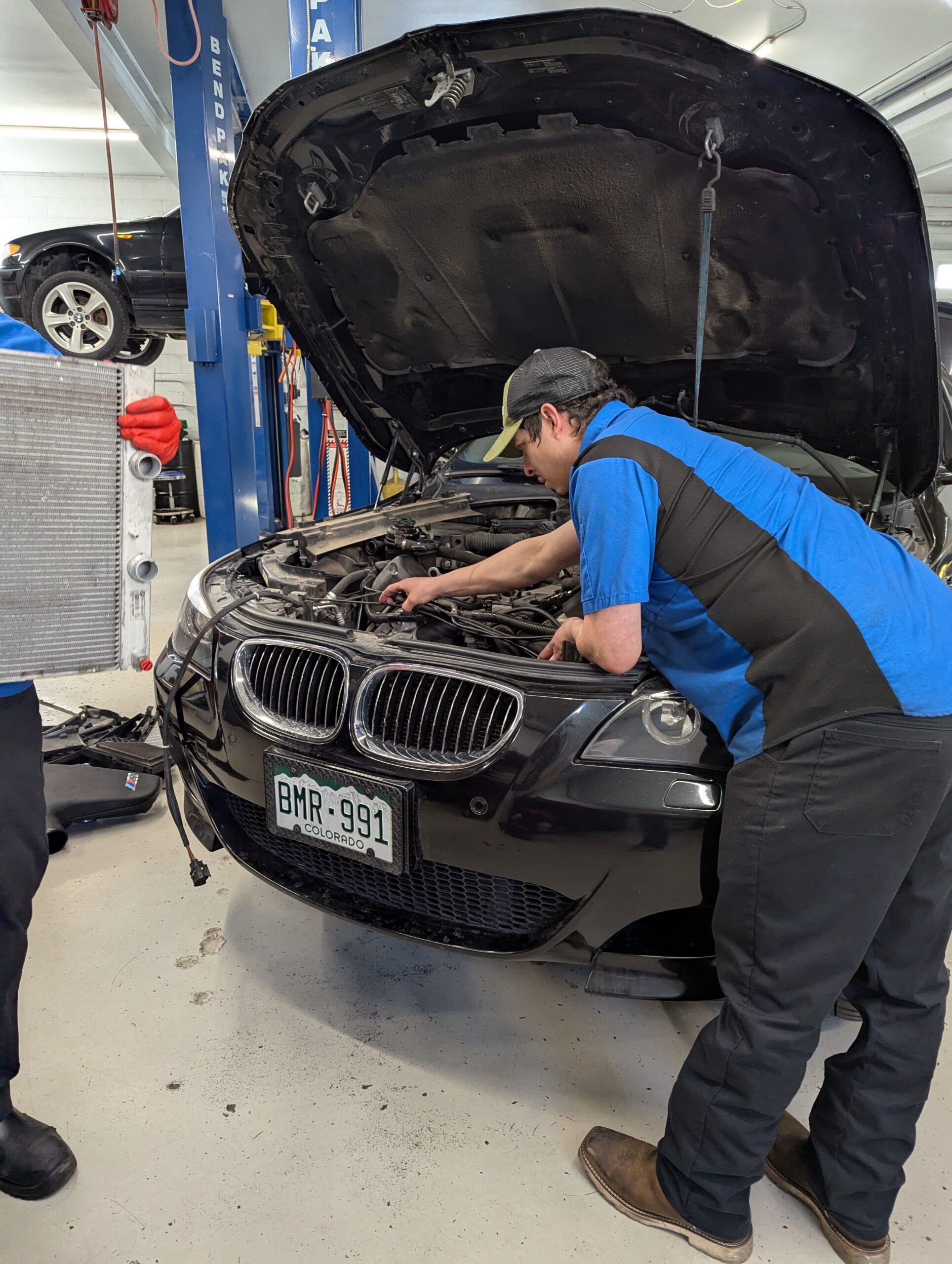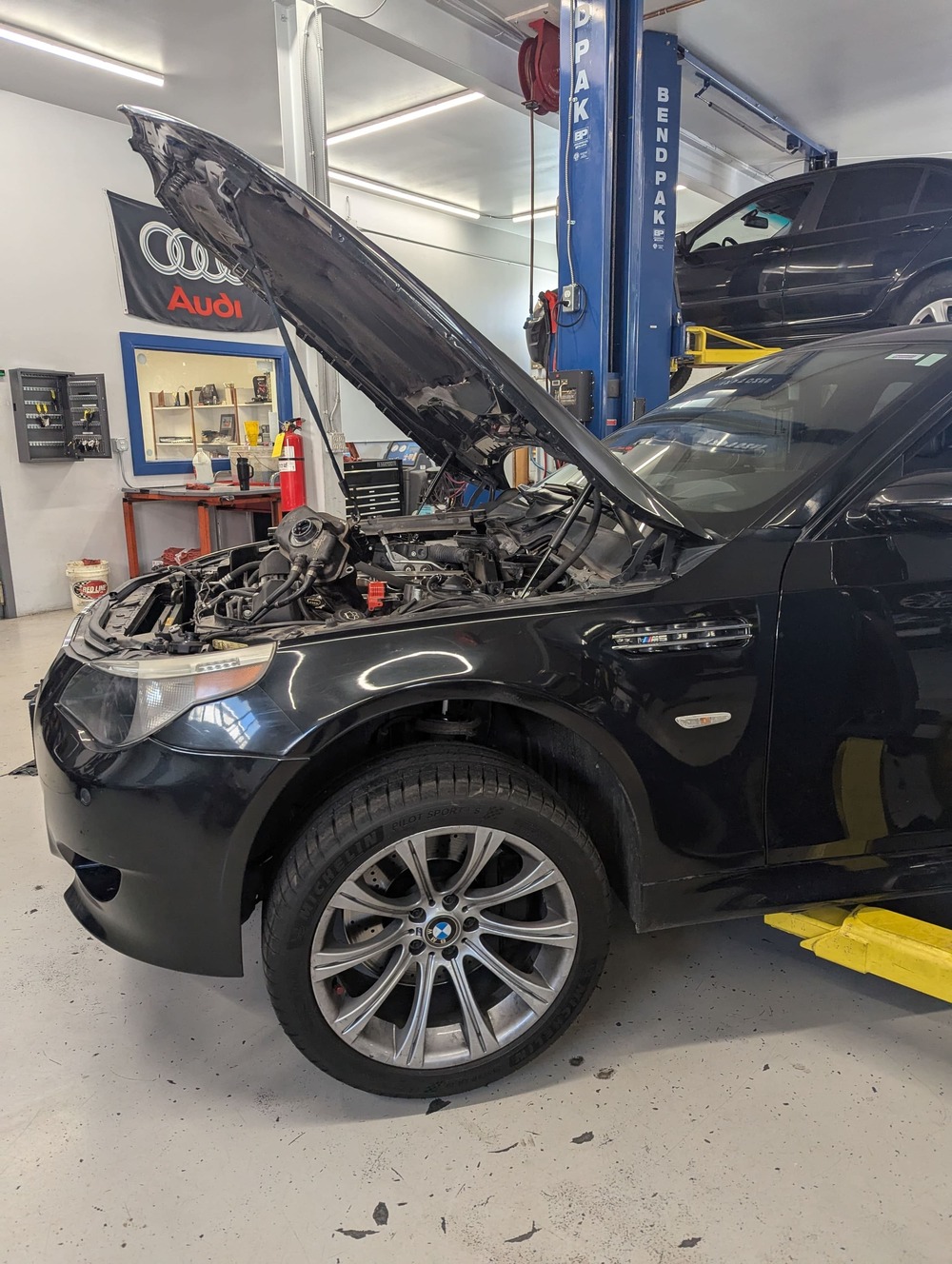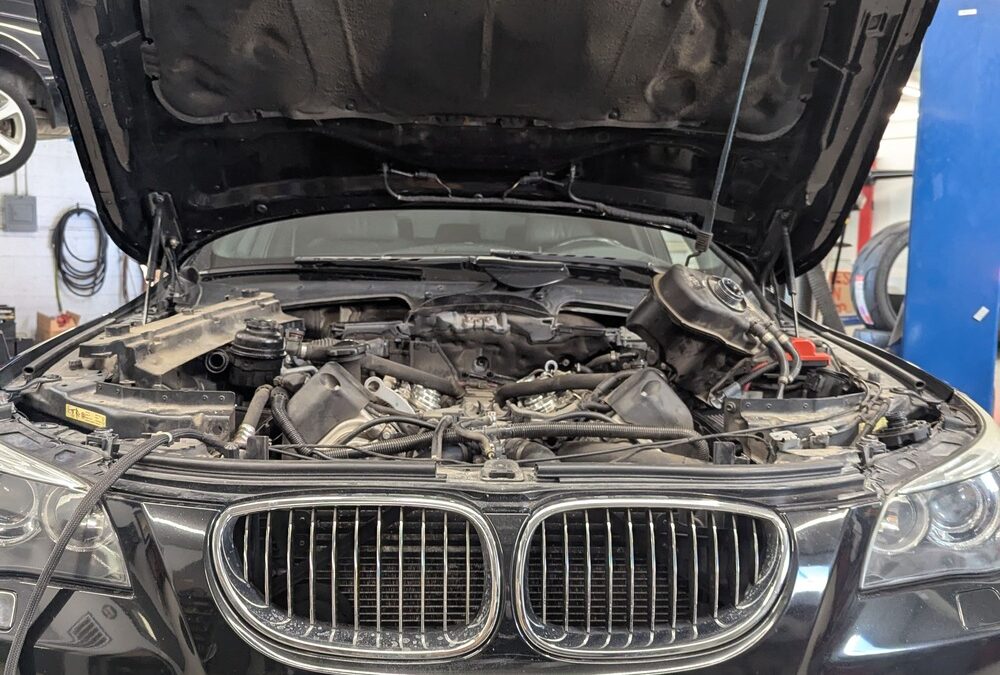Dart Auto Let’s talk about a recent visitor to our bays that brought back some fond memories – a stunning 2006 BMW M5, packing that glorious V10 engine. These cars are a true marvel of engineering, and while they deliver an incredible driving experience, they can sometimes present unique challenges in the workshop. This particular M5 rolled in with some intriguing issues that needed careful diagnosis.
After getting the key from the owner and hearing their concerns, the first step, as always, was to connect our diagnostic equipment and have a conversation with the car’s computer. The initial scan revealed two stored faults:
00279B: DME – alternator BSD communication error. This one had occurred 3 times in the past but wasn’t currently active. The “BSD” is the Byteflight Serial Data bus, a communication line that connects various components, including the alternator, to the DME (Digital Motor Electronics – the engine computer). An error here means there was a hiccup in that communication.
002B59: Coolant thermostat monitoring. This fault had only occurred once and wasn’t currently present either, but it’s a red flag for the cooling system’s efficiency.
Two seemingly unrelated faults, both intermittent. This is where the real detective work begins.
We decided to tackle the thermostat fault first. The diagnostic procedure for this code pointed directly towards the thermostat itself as the most likely culprit. These components are critical for regulating engine temperature, and a failing one can cause all sorts of drivability issues and, of course, trigger fault codes. Following the fault-finding guide, we confirmed that the thermostat was indeed the prime suspect. This would require replacement.
Next, we turned our attention to the more elusive BSD communication error with the alternator. An intermittent communication fault like this can be tricky. We started by performing a thorough visual inspection of the connections on the BSD bus, particularly around the alternator. Everything looked clean and securely connected. We then went deeper, testing the wiring itself for any breaks or shorts to ground. Our tests showed the wiring was currently in good health.
This left us with a few possibilities for the intermittent BSD fault: the alternator itself, the oil level sender, the IBS (Intelligent Battery Sensor), or even the DME could potentially cause this communication disruption. The challenge was that the problem wasn’t consistently present, making it incredibly difficult to pinpoint the exact source through simple testing. You need the fault to be active to truly track it down.

Given the intermittent nature and the potential components involved, we had to make a recommendation based on the most probable causes and a logical diagnostic path forward. While any of the components on the BSD bus could theoretically be the issue, a failing alternator (or more specifically, its voltage regulator, which often houses the BSD communication module) is a common source of such errors.
Therefore, our recommended first step was to replace the alternator or, at the very least, the voltage regulator. This is often the most cost-effective starting point for this particular intermittent fault. We advised the owner that we would monitor for the return of the fault after this replacement.
So, for this visit, the job involved more than just swapping parts. It was about careful diagnosis, understanding the complex systems at play in these high-performance machines, and making informed recommendations based on experience and technical data.
The parts involved in this visit included:
- A new alternator or voltage regulator (depending on the chosen approach)
- A new thermostat
- Essential supporting components like thermostat bolts, fresh coolant, O-rings for all connecting pipes to ensure a leak-free seal, and seals for the banjo bolt.
Working on these V10 M5s is always a rewarding experience. They represent a peak in BMW’s engineering history, and keeping them running their best requires a methodical and knowledgeable approach. We’re confident that addressing the thermostat will resolve that specific issue, and starting with the alternator/voltage regulator is the most logical next step in chasing down that intermittent BSD communication fault.

If you’re experiencing any unusual behavior with your BMW, especially an older M model, don’t hesitate to bring it in. Our team is equipped with the expertise and diagnostic tools to get to the bottom of even the most challenging issues.
Stay tuned for more insights from the Dart Auto workshop!
